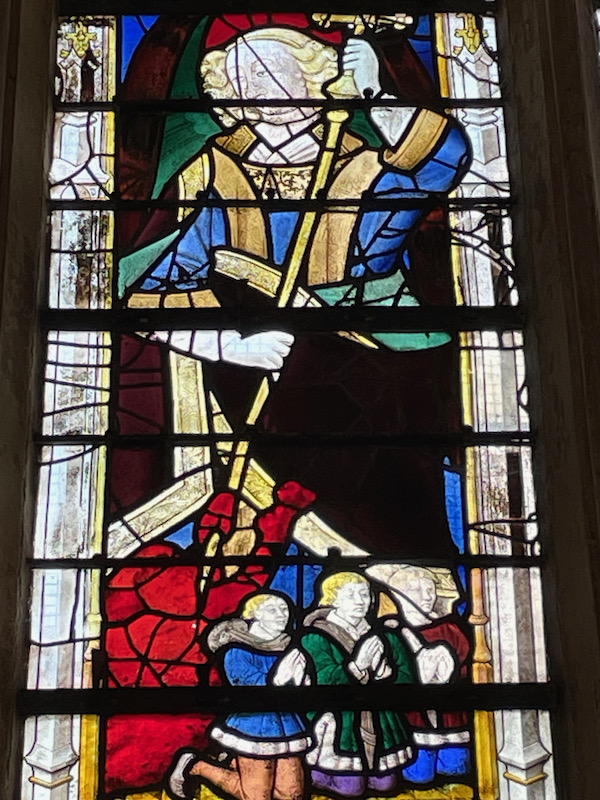Our Blog - Normandy 2023 - Caudebec-en-Caux, France
As you go around France, you see lots of towns that have the "same" name with something added to the end to tell them apart. For example, there is the town of Villefranche (in the Yonne department) and then 14 others that start with Villefranche and then add something (-sur for those on rivers, or -de plus something that distinguishes the town). We stopped at Caudebec-en-Caux, which was formerly known as Caudebec until the 2nd half of the 19th century when the -en-Caux part was added to avoid confusion with Caudebec-lès-Elbeuf. It is no longer actually a unique town as of 2016, but a commune that is part of Rives-en-Seine, which was created by the merger of 3 different towns. It sits on the Seine river and, in fact, there was a cruise ship from Riviera Travel (called the Jane Austen) docked when we were there (they do Seine river cruises).
Historians estimate that Roman occupation here began in the 3rd century. XXXXX In the 7th century, there was a large monastery here that was Queen Bathilde, wife of King Clovis II, made a large donation to. It was abandoned during the Viking invasions in the 9th century and never rebuilt. During WWII, in June 1940, most of the town was destroyed in a fire that started when the Germans attempted to sink a ferry that was crossing the Seine. The bombs missed the ferry but hit the town, causing a fire that lasted for 3 days and destroyed 80% of the city. Our walking tour took us around to see some of the 20% that was spared.
This building is the former jail that was built in the 14th century. It was an integral part of the fortifications surrounding the town (the walls are a meter thick) and is one of only a handful of medieval prisons remaining in France.
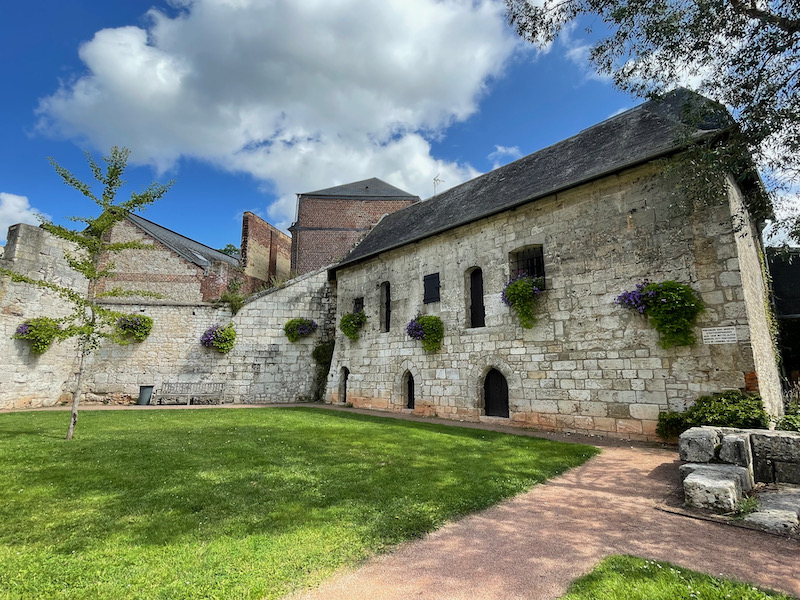
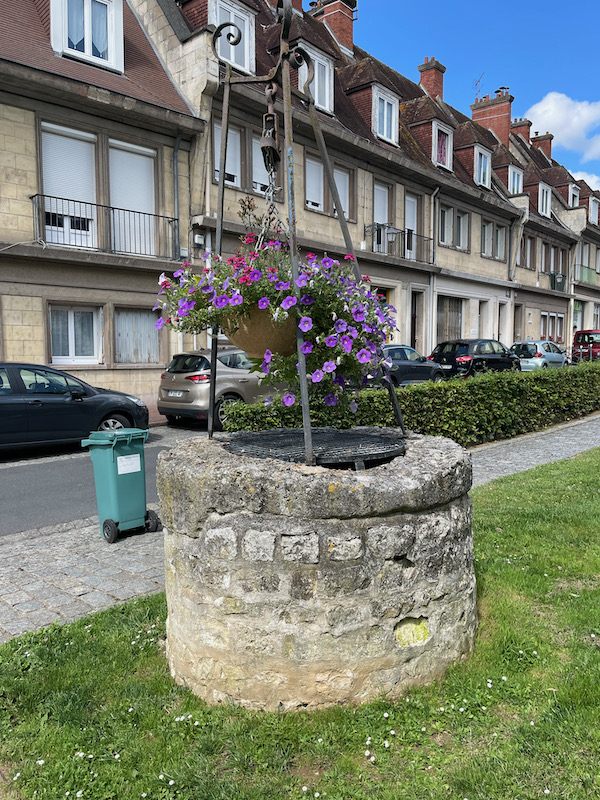
This house definitely stands out, dating from the 12th and 13th centuries. It is called the "Templars" house because it served as a Protestant temple at the time of the Reformation. It was damaged but escaped total destruction in 1940, probably due to its stone structure, then restored. It is one of the rare Norman houses from the ancient medieval period. It houses a small museum of local history and a local craft market. There is a funny sign outside with the title "The Templars will not be shipped off to the US". Seems that there was a "prospective American buyer" who seemed to want to buy the house, dismantle it, shipped to the US, and then rebuilt there. A historical society here "dissuaded" the buyer from doing that.
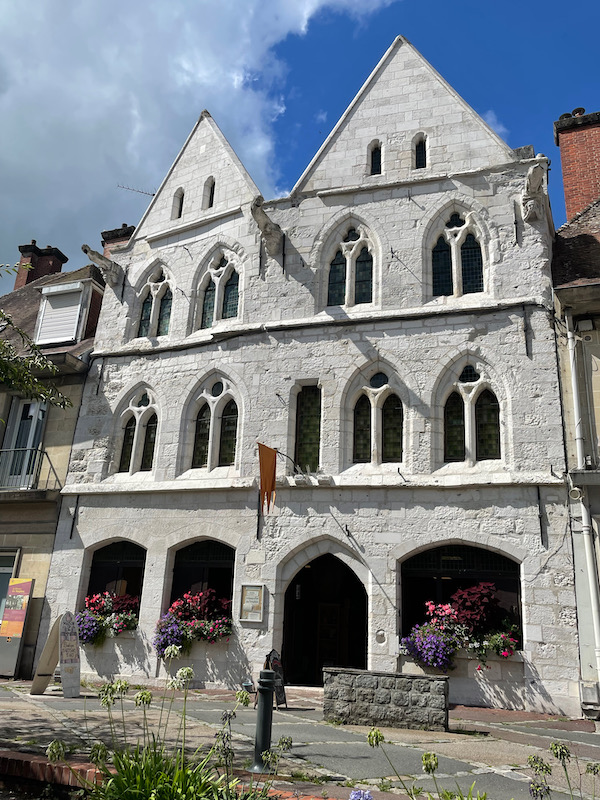
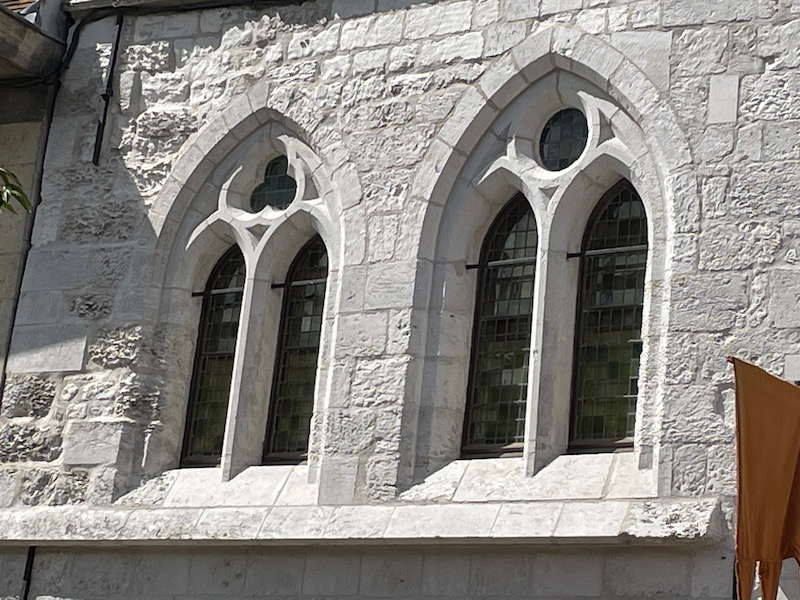
In addition to the Seine, there are 2 rivers that run through the town (the Sainte Gertrude and the Ambion), running through these little channels. They played a key role in the growth of the tanning industry here during the medieval times.
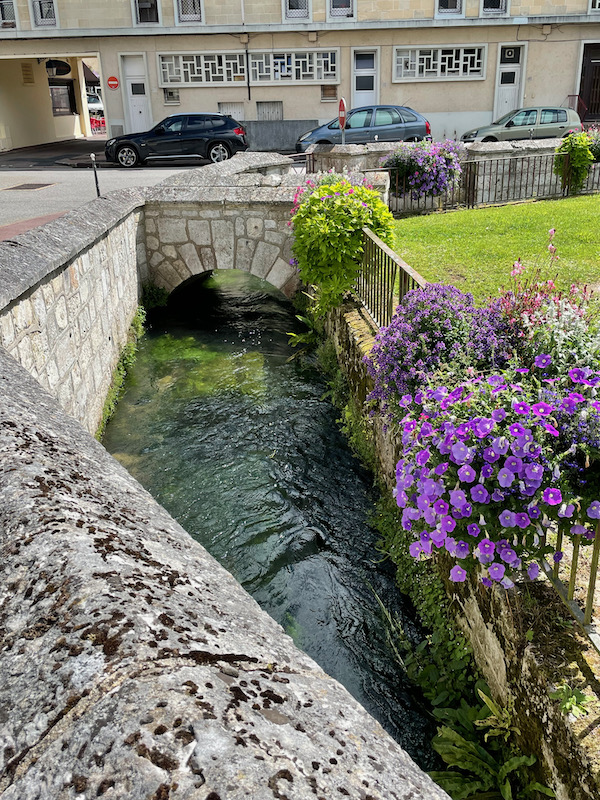
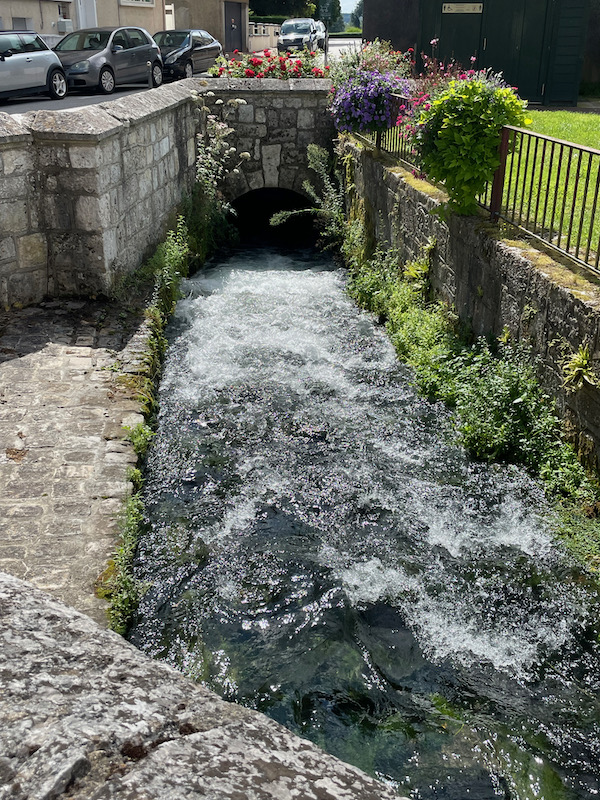
The construction of the Église Notre-Dame de Caudebec-en-Caux started in the 11th century as the abbey church for the Merovingian Women's Abbey here. By the end of the 14th century, it was described as "small", "very dark", in mostly a Romanesque style. Between 1426 and 1484, it was completely rebuilt in the flamboyant Gothic style you see now. The last parts, the bell tower and spire, were completed around 1530. The main portal is finely sculpted and decorated with a whole group of sculptures (originally 333 of them) representing saints, but also characters from daily life at the time. There was a bit of damage during the wars of religion but some of them have been restored (compare the last 2 pictures).
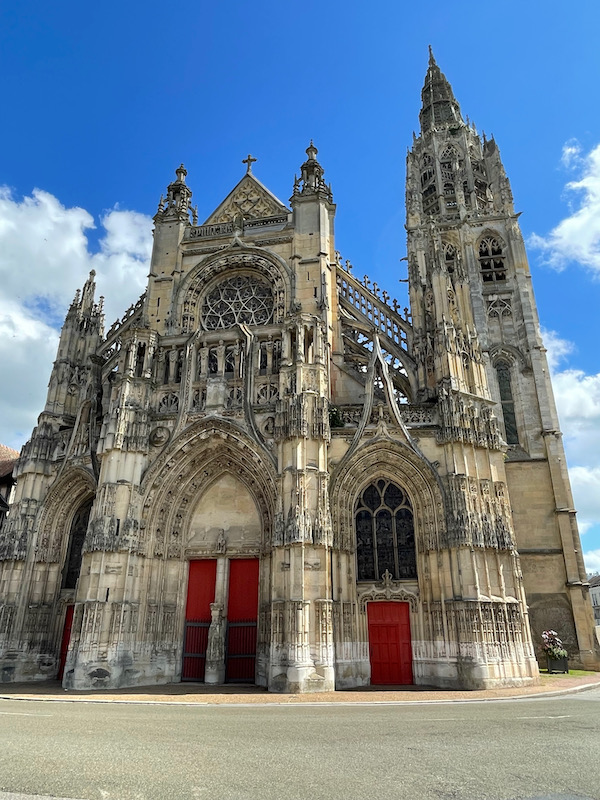
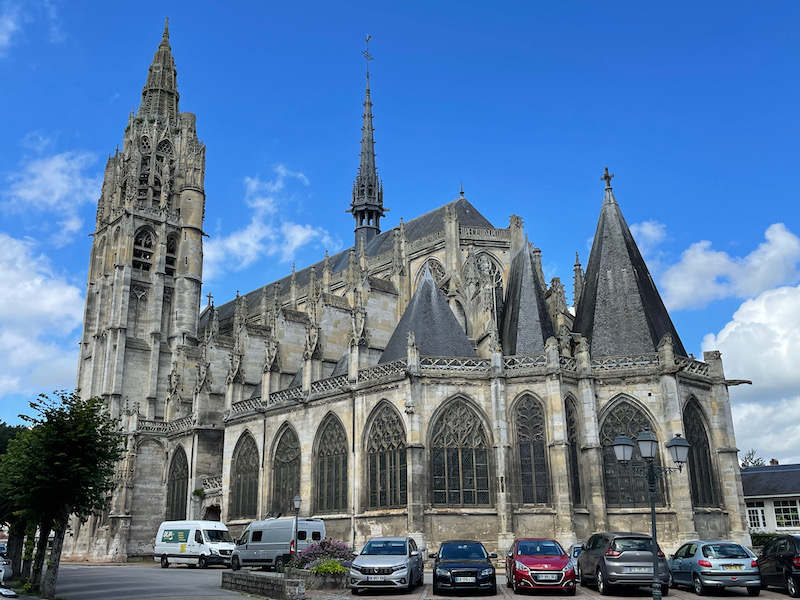
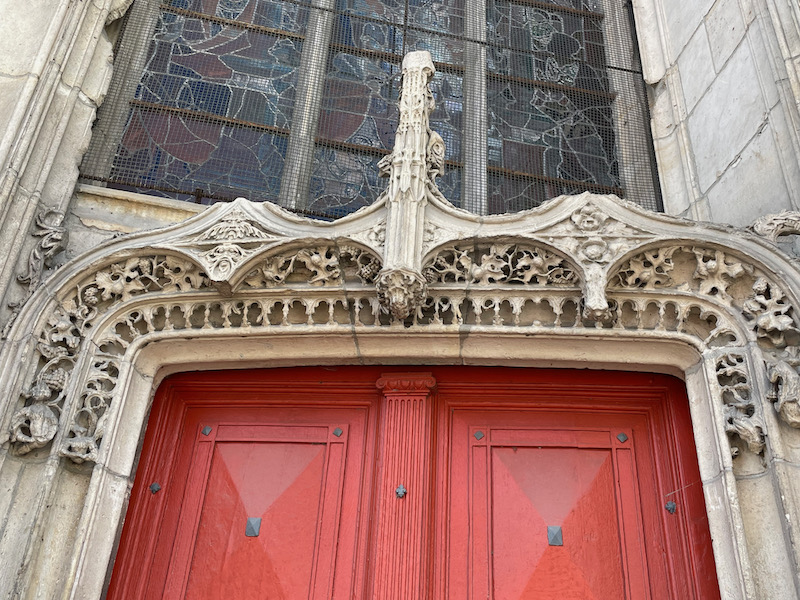
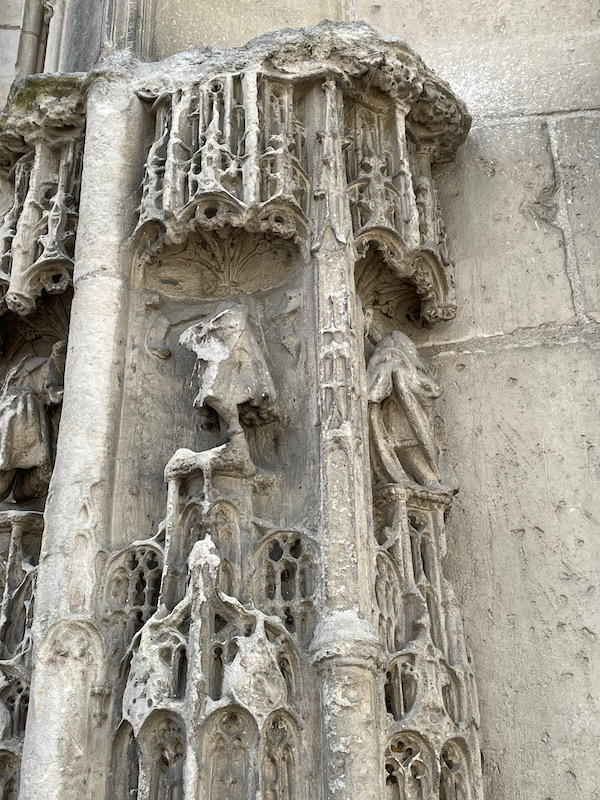
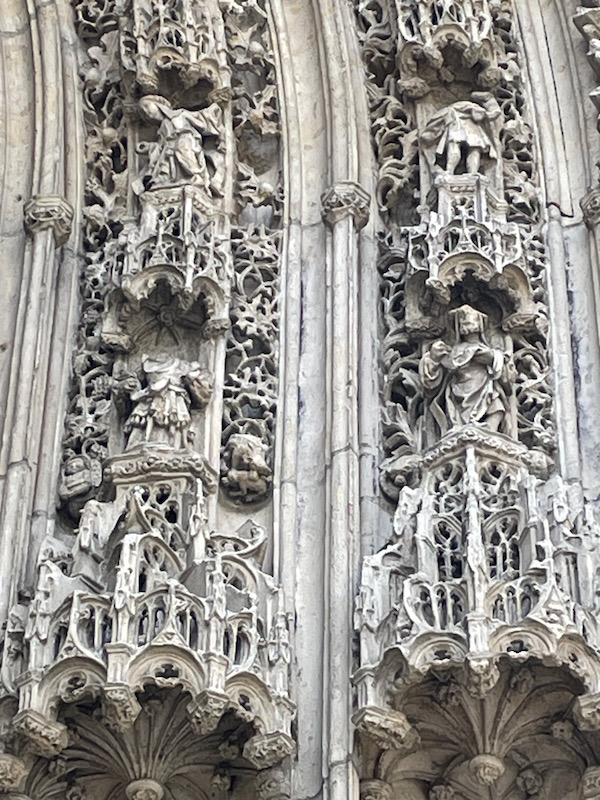
What you'll see most on this part of the blog are stained-glass windows but I have a few others to give you an idea of the space inside, and some of the decorations. Very white, like many of the churches, there used to be quite a bit of color which you can still see in a few places. At the gallery level are lots of flamboyant Gothic tracery.
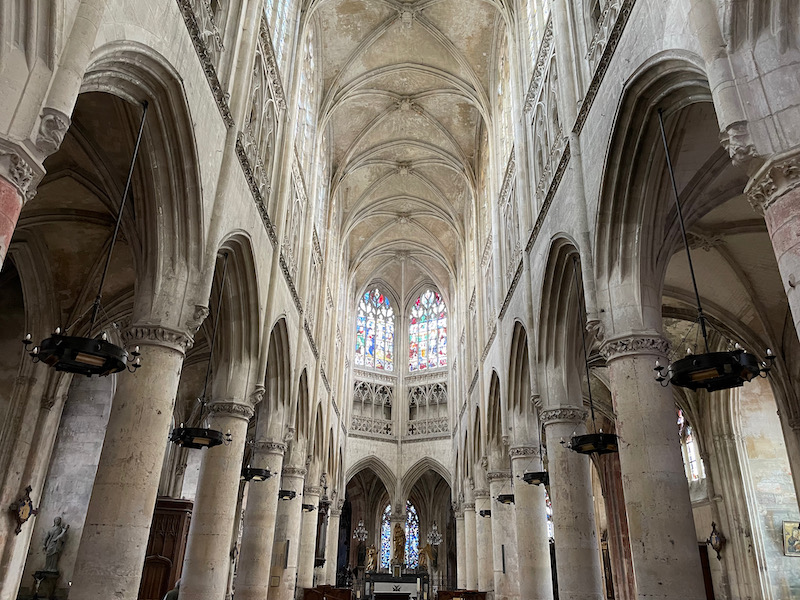
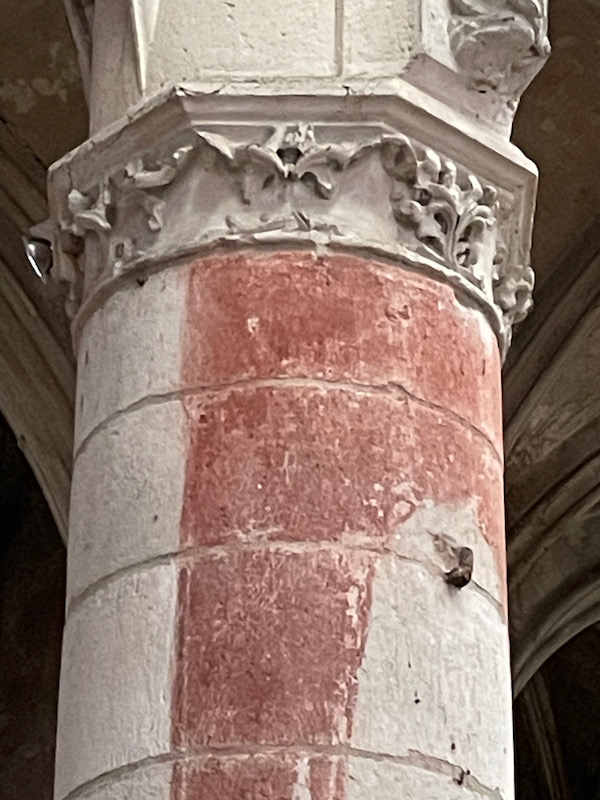
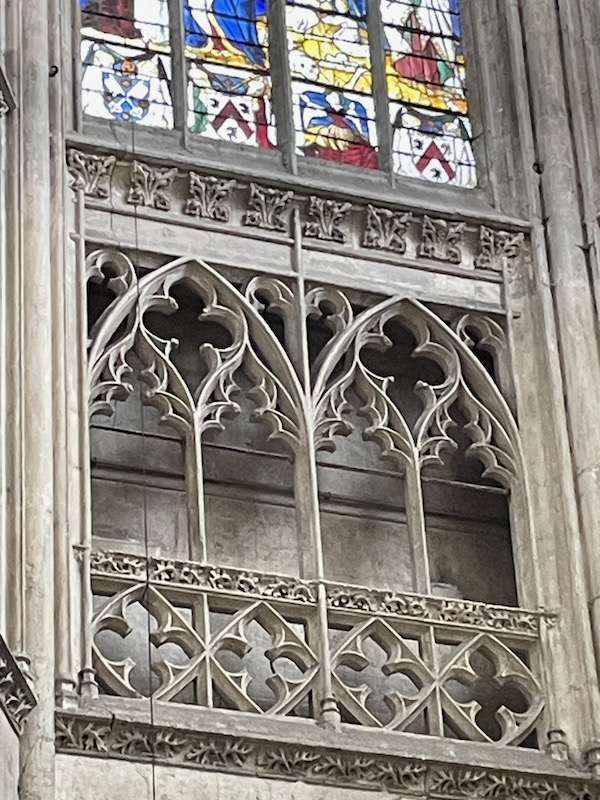
The organ sits in a French Renaissance case, dating from 1542.
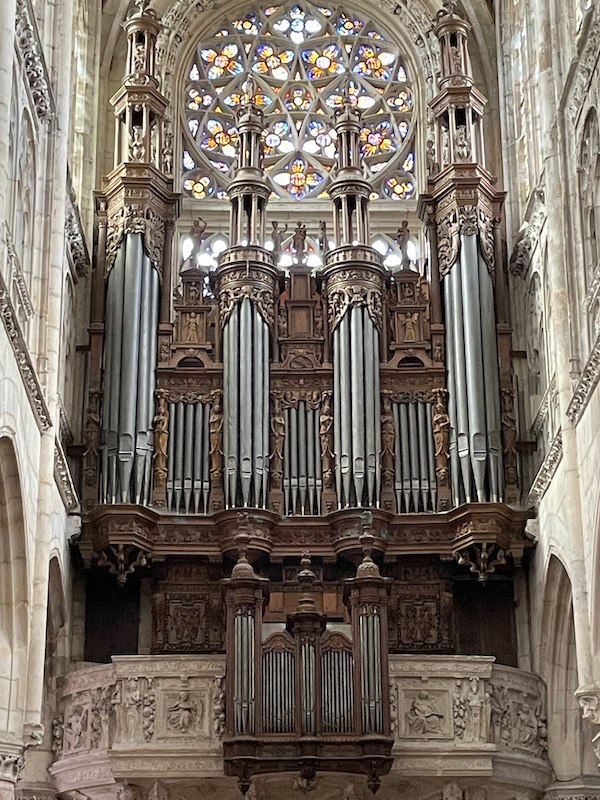
The stained-glass windows date from the 15th and 16th centuries. I will start with the one in the Saint Francis chapel, which dates to 1531. In the tympanum is the Transfiguration when Christ appears in a white tunic, and below are Saint Peter with the apostles John and James.
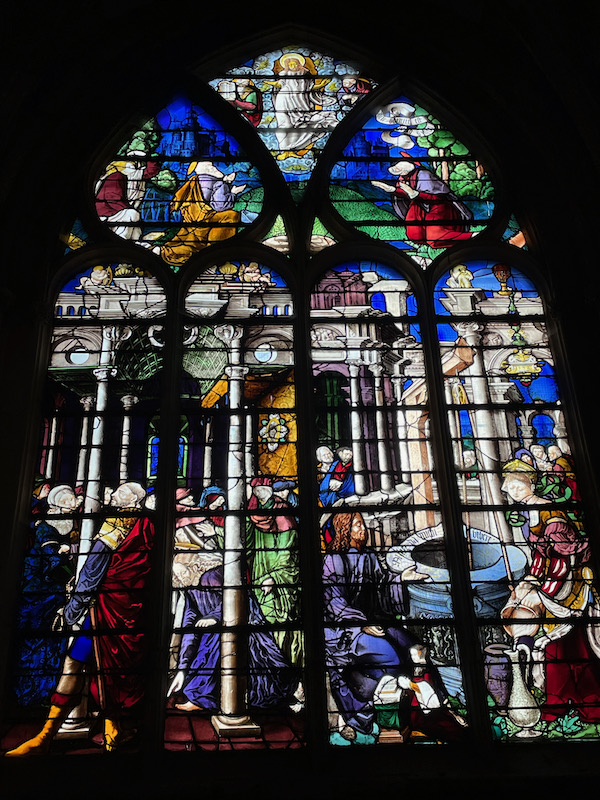
The Chapel of Saint Nicholas window dates from the end of the 15th century. In the left-most lancet window, you can see Saint Denis, the first bishop of Paris, holding his head. He was beheaded in the year 250. According to legend, angels accompanied him as he carried his own head from the where he was executed to his chosen burial site, which is where the church of Saint Denis was built just outside of Paris.
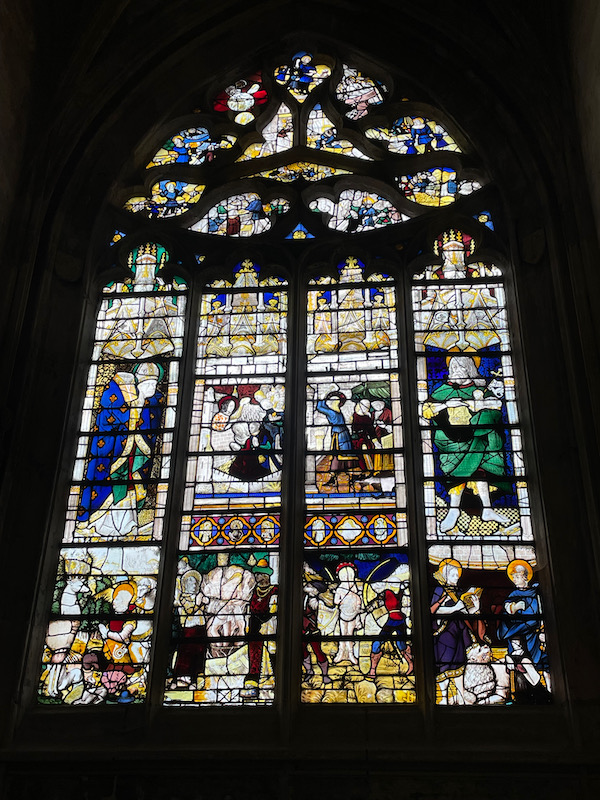
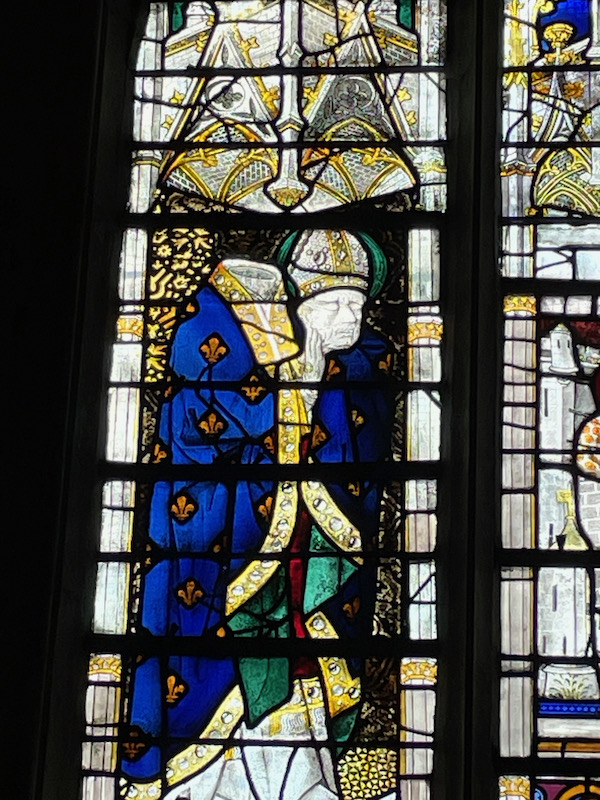
The chapel of St Supulcre has more modern windows, created in 1950. The close-up shows the Crucifixion (on the left) and Jesus showing his wounds to Thomas (right).
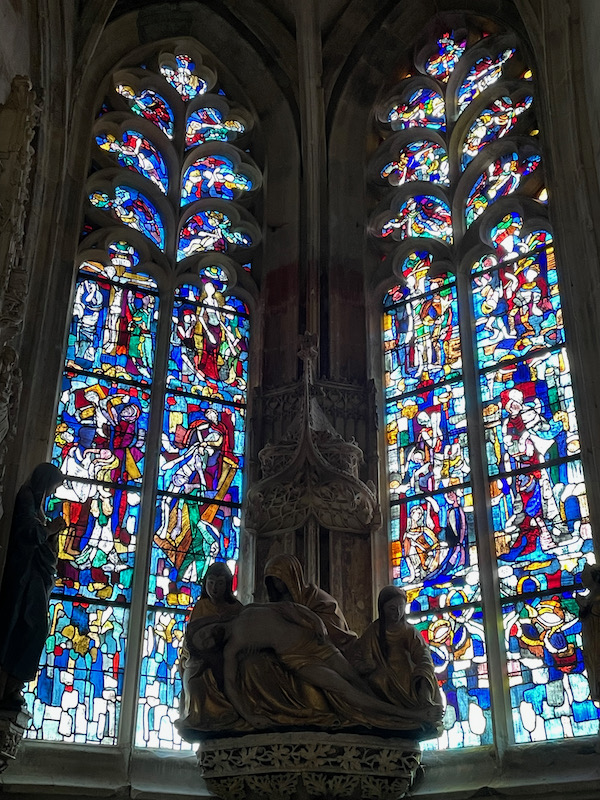
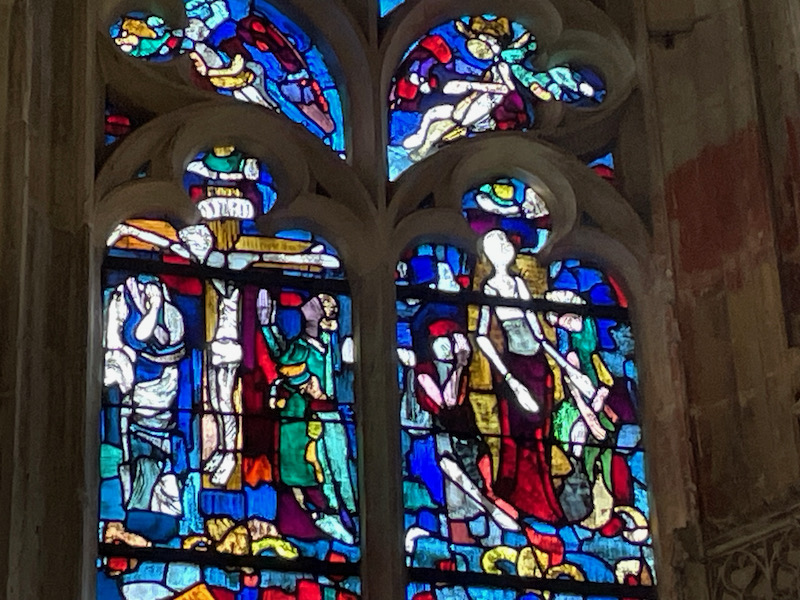
The window in the Chapel of Notre-Dame is quite interesting because it is a mixture between 15th century stained-glass in the Tympanum and 20th century glass (1978) below.
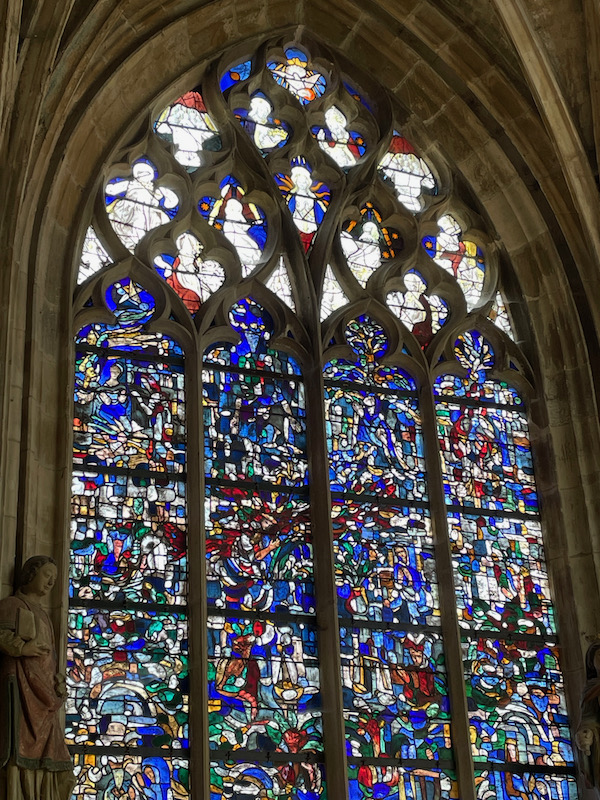
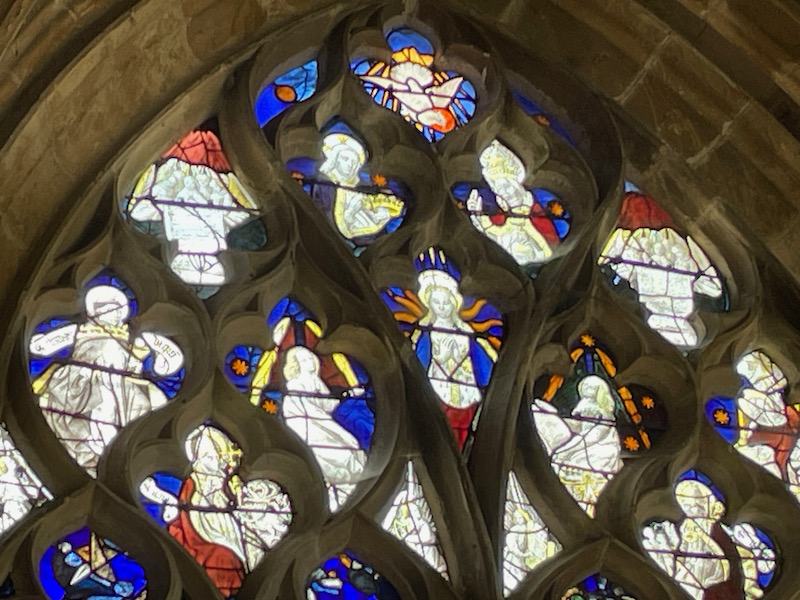
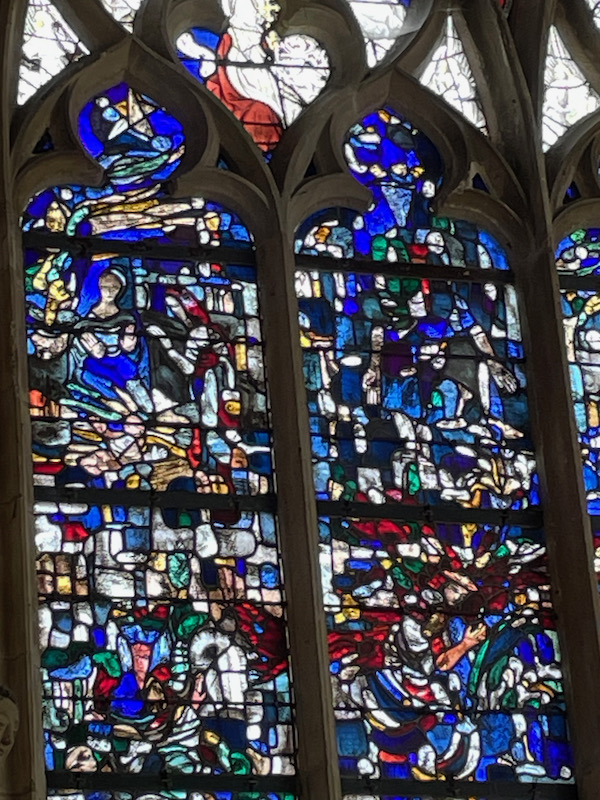
The Chapel of Saint Michael shows Saint Michael with the pole of his cross in the body of a demon, killing him (the red demon below).
